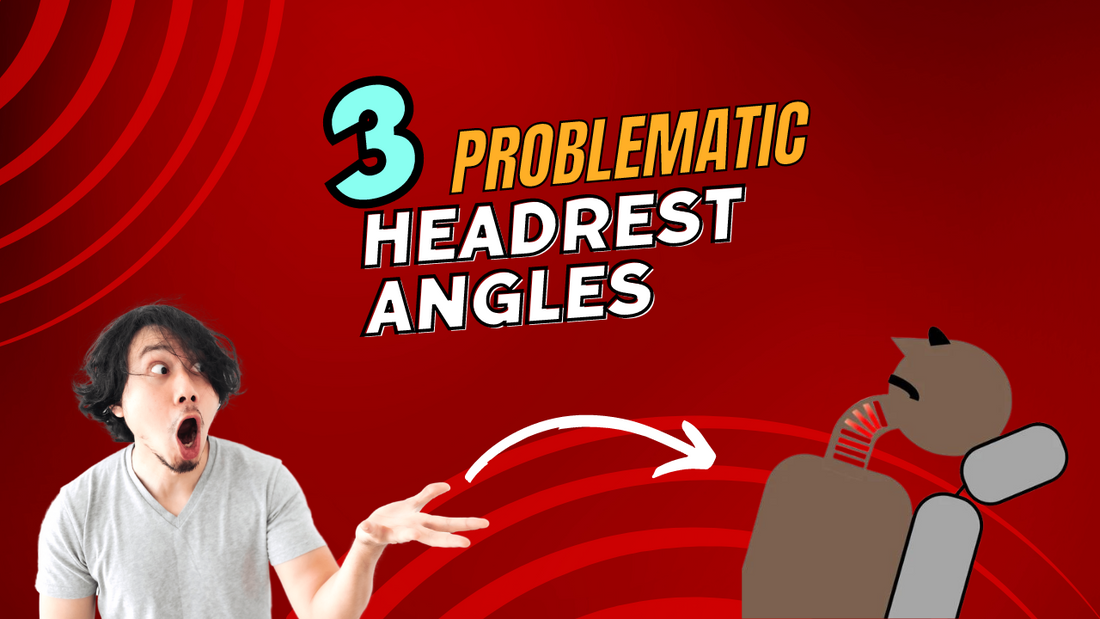You are not alone! 16% of people suffer from the angles, head restraints are a safety feature, but they should not push your head forward. Their angles were established for a gap of 2in behind the head of an average person. Not everyone is average and for 16% of people the headrest pushes the head forward instead of having a backset gap.

❌ 3 unsafe headrest modifications
- Removing headrests
- Flipping them backwards: gap too large for protection
- Bending the posts: weakens the designed strength
Whiplash is not a rare injury, approximately every 15 seconds, an American sustains a whiplash injury, most at speeds less than 12mph.

❌ 3 types of cushions that DO NOT solve headrest angles
-
Headrest pillows: worsens the problem by pushing the head further forward
-
Lumbar or back cushions: do not address headrest angles and can push the thigh forward on the seat causing new pressure points behind the knees
-
Seat cushions: don't address headrest angles

✅ 1 cushion SOLVES headrest angle issues

Related article : 3 Keys to solving headrest angles

